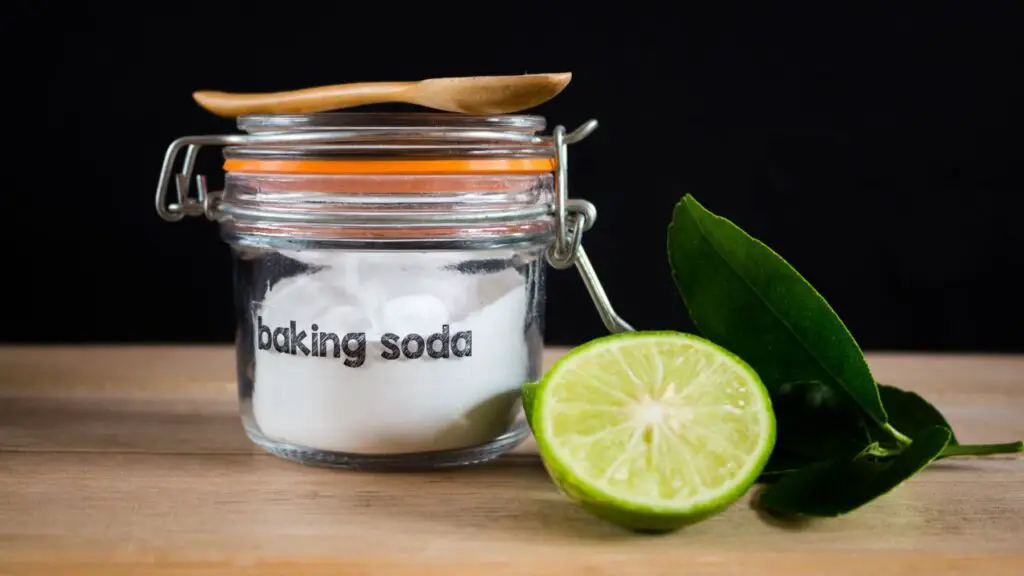In this article we are going to explain if the baking powder the same as baking soda. And, what is the difference between them. As well as, how to use them.
One time, you cooked everything according to the recipe, measured all the ingredients and soda correctly, it seems that they added it in time. But for some reason, an unpleasant soapy and bitter taste appeared in the finished pie. Sometimes it happens that the taste has not deteriorated, but the pastry has not particularly risen. Not only soda, but also baking powder sometimes presents unpleasant surprises. For example, baking powder was added, and the amount seemed to be the right one, but the cake didn’t get any airiness or friability.
You cannot blindly follow step by step and expect perfect results. All products and components of dishes are different for each supplier. Purchased baking powder can also be different and raise pastries in different ways.
So it’s not about the recipe, but what is it? All these troubles could have been avoided – you just need to know how. Let’s figure it out!
Table of Contents
How does baking soda work?

The action of soda is based on a simple chemical reaction.
An alkaline ingredient (soda) interacts with an acid, due to which a large number of carbon dioxide bubbles are released. Which give the dough looseness, splendor and airiness.
Soda is an alkali, which means that acidic ingredients are simply vital for it.
It behaves well in recipes with ingredients such as honey, lemon or sour berry juice, sour cream and others. And lovers of honey cakes will generally unequivocally say that this cake cannot be cooked at all without soda! When this powder interacts with acidic products, a chemical reaction occurs, giving the dough splendor, friability and airiness.
How to add the baking soda?
Many housewives use a method that has been passed down from generation to generation.
So, they quench soda with vinegar, and then add it to the dough.
If you put the baking soda with vinegar before adding it to the dough.
The chemical reaction will begin even in a spoon with soda, which means that the carbon dioxide necessary for the rise will be released literally into the air. In this way, it is unlikely that it will be possible to achieve a lush and airy texture of baking.
So, you have to combine soda with dry ingredients (for example, flour), and add vinegar to the liquids according to the recipe (if the liquids are acidic, then vinegar is not needed), and then mix the dry ingredients with the liquid ones.
Then the chemical reaction will begin in the dough when it comes into contact with acidic components, and the main rising process will already be in the oven.
Very important
Do not use soda in those recipes where there are no sour ingredients! Baking powder is better for them. There is simply nothing for soda to react with. In such recipes, only high temperature acts on soda, which, of course, starts the reaction.
But there is no guarantee that the soda will have time to fully react.
This means that it may simply not work and will not give the necessary rise and splendor.
But will add a very unpleasant bitter and soapy aftertaste to the dish. So, we can say that pancakes with soda in milk are good . We make them thin, while due to soda, beautiful openwork holes form in them. And since the frying temperature is usually higher than the baking temperature of the pies, there is no soda flavor left in the pancakes. But in the case of pancakes,
People who are sensitive to soda flavor should be especially careful with baking soda.
Baking powder same as baking soda ?

Do you think baking soda and baking powder are the same thing? Of course not! Baking soda is one of the ingredients in baking powder or baking powder. In its composition, soda, citric or tartaric acid and flour are most often used. In some cases, flour is replaced with cornstarch. This does not affect the taste of baking in any way, but slightly increases the shelf life of the baking powder itself.
This means that the soda will accurately react with the acid and be completely neutralized. When using baking powder, you will never encounter the problem of a soapy bitter taste.
Due to its balanced composition, baking powder should be used primarily in recipes where there are no acidic ingredients.
Very important
In what cases can baking powder for dough not work? For example, if it has been stored for a long time. Once again, the baking powder for the dough is completely balanced in composition.
If moisture gets inside the bags during storage, the reaction will begin immediately. So, with a high degree of probability, she will have time to end in a bag, without reaching the test. Of course, such a baking powder is unlikely to be able to raise the dough.
The baking powder may not work in one more case – if, after introducing it into the dough, the process of whipping or mixing is delayed. Baking powder starts working as soon as it comes into contact with liquids. Therefore, if you beat the dough with baking powder for a long time, or leave it for a long time before baking, then the chemical reaction may end before the cake enters the oven.
So, After introducing baking powder into the dough, you need to mix everything as soon as possible and send it to the oven! So your pastries will turn out more magnificent and airy.
Baking powder the same as baking soda?

In some cases, baking powder can be replaced with baking soda. The easiest way to do this is in recipes for jellied pies on sour cream or kefir dough, honey pastries or dough with the addition of citrus juices. In these recipes, the dough already contains acidic components, which means that soda will have something to react with.
When replacing baking powder with soda, the latter should be taken 2-2.5 times less than the baking powder in the recipe.
But what if there are no acidic ingredients in the dough, but there is a need to replace the baking powder? We’ll have to change the recipe a bit.
Replace baking powder with soda.

If you want to replace baking powder with soda in a dough without acidic ingredients, add them in a small amount: soda will need to be mixed with dry baking ingredients, and a couple of tablespoons of sour cream or lemon juice should be added to the liquid ones. Vinegar is also suitable in this case – add 2 teaspoons of vinegar to 1 teaspoon of soda. Then, when kneading the dough, the soda will react with the acid and carbon dioxide bubbles will form, which will make your pastries airy.
What can you substitute for baking soda? baking powder. And it’s much easier! Since the baking powder is already balanced, there is no need to think about the presence or absence of acidic ingredients. Just take 2-2.5 times more baking powder than indicated in the soda recipe and combine with dry baking ingredients. When combining liquid and dry ingredients, the baking powder will react and create the necessary splendor and airiness.
Using the both baking soda and baking powder

With soda and baking powder in different recipes, everything seems to be clear. But there are still recipes where both soda and baking powder are used at the same time?
Most often, the use of both can be found in recipes for butter cakes, muffins, shortcakes, cookies and biscuits with raw carrots. The use of soda and baking powder at the same time in such recipes is necessary for different purposes. The baking powder starts the reaction immediately and makes the dough structure more magnificent. A ruddy attractive crust is better obtained in an alkaline environment – this is what soda is for. In recipes for raw carrot pies, baking soda is simply necessary in order to make the root vegetable softer. That is, to put it simply, baking powder works on the texture of baking, and soda on the attractive appearance and density of additional components.
If you are especially sensitive to soda and are afraid of getting a characteristic soapy taste in baking, then even in recipes with two baking ingredients, you can refuse soda by taking more baking powder. Yes, a bright ruddy crust may not work, but a soapy bitter taste can be avoided.
How to make baking powder at home ?
Baking powder for dough contains only a few simple components. Soda, citric acid and flour (or starch) can be found in every home. The main difficulty is only to correctly measure and combine the ingredients.
To make homemade flour-based baking powder, you need to take 12 teaspoons of flour, 5 teaspoons of baking soda and 3.7 teaspoons of citric acid. It is better to grind citric acid before cooking in a coffee grinder, and sift the flour.
Important : When making baking powder for dough at home, please note that the dishes must be dry! If you begin to combine the baking powder components in a wet bowl, the reaction will begin in it.
Ready homemade baking powder is stored in a dry, tightly closed jar in a cool, dark place.
To prepare starch-based baking powder, you need to take 1 teaspoon of citric acid, 2 teaspoons of baking soda and 4 teaspoons of corn or potato starch. In industrial production, corn starch is more often used, since it is believed that it does not add any flavor to the dish. But this statement is debatable. In the amount in which potato starch as part of the baking powder gets into the dish, it is unlikely to somehow change the taste of the finished product … So you can safely take potato starch too!
Store homemade starch-based baking powder also in a tightly closed jar in a dry and dark place (for example, in a kitchen cabinet).
What is the best homemade baking powder? The fact that you can cook it very little. This means that such a baking powder will always be fresh and will not have time to lose its properties during storage!
CONCLUSION
So which is better: baking soda or baking powder? There is only one answer to this question: they are both good! These two baking ingredients can easily replace each other.
It is important to remember that in recipes with acidic ingredients, the baking powder for the dough is changed to soda in the right proportion without any additional steps. And in those recipes where there are no acidic components, in order to replace the leavening ingredient, they will have to be added. Soda is even easier to replace with baking powder – you just need to remember the proportions.
People with special sensitivity to soda need to be extremely careful when replacing leavening components and do not forget that the soda in the recipe must definitely react with something! So it will be possible to neutralize this component and avoid the appearance of a characteristic aftertaste.
Remember these simple tips and cook with pleasure! Always be guided by your taste and peculiarities of perception of certain products. And then the result will only please you.
You may are interesting in Health benefits to garlic




Nice blog here! Also your site loads up fast! What host are you using? Can I get your affiliate link to your host? I wish my web site loaded up as quickly as yours lol
I loved as much as you’ll receive carried out right here. The sketch is attractive, your authored material stylish. nonetheless, you command get bought an nervousness over that you wish be delivering the following. unwell unquestionably come more formerly again as exactly the same nearly a lot often inside case you shield this hike.